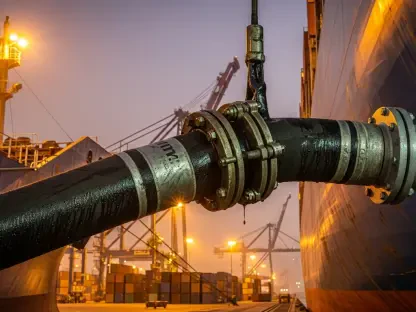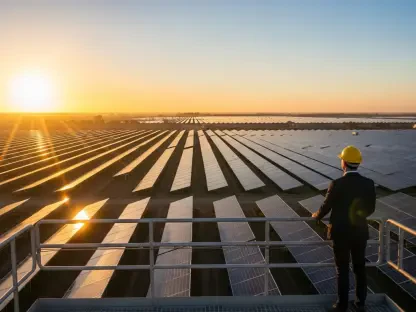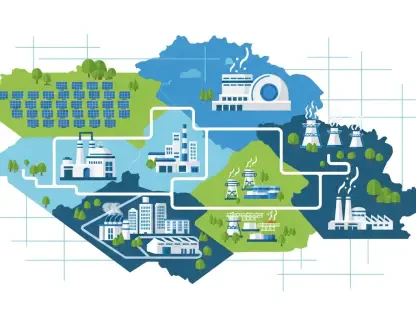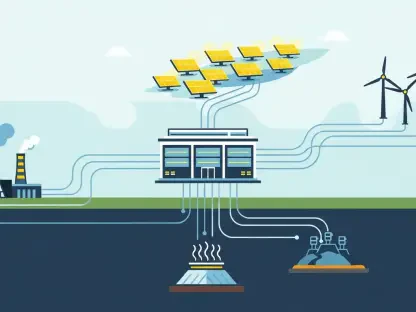Australia’s east coast gas market stands at a crossroads as the government embarks on a comprehensive review amid potential supply shortfalls. This analysis aims to shed light on the looming challenges, dissecting key trends and forecasts that could steer Australia’s gas strategy. The focus is on balancing domestic energy needs with its status as an LNG export leader, which holds considerable implications for stakeholders and policy frameworks.
Strategic Overhaul in Response to Supply Concerns
Faced with alarming predictions of supply shortages expected within the next few years, Australia has initiated a far-reaching evaluation of its gas market rules. This review seeks to ensure affordable domestic gas for consumers while maintaining its reputation as a dependable global supplier. The landscape is marked by intricate dynamics involving export controls and mandatory sales codes, with the threat of increased costs and uncertainty casting a shadow over the energy sector. Climate Change and Energy Minister Chris Bowen underscores the necessity of securing reliable energy for Australians without impairing export commitments. The center-left government, led by Prime Minister Anthony Albanese, recognizes gas’s integral role in transitioning from coal-based power, emphasizing balanced resource allocation.
Historical Context and Policy Implications
Australia’s transformation into a major player in the global LNG market is rooted in its rich natural gas reserves. Over time, domestic demand has surged, often competing with the lucrative export market. The government’s past interventions, including price caps and limited exports, have stirred controversy among industry giants like Shell and ExxonMobil and Japanese importers, who argue such measures amplify costs and intensify supply uncertainties. These historical interactions illustrate pivotal motivations driving the current review. As Australia navigates evolving energy dynamics, its decision-making is influenced by a determined commitment to meet domestic energy requirements while honoring international obligations.
Market Trends: Export Controls and Resource Allocation
A significant dimension of the review involves reconciliation of export controls and domestic resource allocation, with the risk of increased operational costs posing a major challenge. As a reliable LNG supplier, Australia stakes substantial industry interests in ensuring minimal disruption in exports. However, the pressing need for enduring energy security within its borders demands careful contemplation. Drawing insights from global models with established gas reservation policies could provide a framework, yet Australia faces unique conditions necessitating distinct solutions tailored to its market characteristics.
Regulatory Assessment: Enhancing Supply Security
Examining regulatory frameworks forms a pivotal part of the review, with the intent to improve supply security and foster competitive pricing. Recent feedback indicates opportunities for enhancing transparency and regulation enforcement by integrating emerging trends, such as blockchain technology, which could offer transformative transparency in supply chains. These developments hold potential to redefine operational norms, with stakeholders vigilantly observing shifts that may impact established regulatory practices. The importance of effective regulation gains emphasis in offering a more robust approach to the turbulent energy landscape.
Regional Perspectives: Infrastructure and Technology Initiatives
Australia’s expansive geography instigates regional complexities, presenting disparities in infrastructure development and resource distribution. Addressing these involves fostering regional cooperation through investments in innovative solutions such as hydrogen blending. Experts highlight the necessity of correcting misconceptions about resource availability and mitigating environmental impacts, aligning public perceptions with policy goals. Considering the distinctive nuances across states, strategic advancements in regional collaboration could optimize resource utilization across the nation, ultimately leading toward cohesive energy strategies.
Forward-Looking Analysis: Industry Trends and Technological Innovations
Technological advancements like renewable energy integration and carbon capture are set to reshape the Australian gas market, propelling efforts to enhance energy security while achieving environmental objectives. Ambivalent global energy demand and shifting policy priorities herald changes in investment landscapes. Regulatory adaptations informed by current analyses may streamline processes, granting a competitive edge. Industry observers anticipate a dynamic interplay between evolving economic forces and legislative responses, crucially steering Australia’s energy transition efforts into the future.
Recommendations for Navigating the Changing Market
The potential outcomes of this review could usher in significant shifts in market operations, prompting actionable insights for stakeholders across the spectrum. Embracing best practices from international counterparts and capitalizing on technological innovations are pivotal to enhancing strategic decision-making. Recommendations focus on encouraging dialogue between industry and government, investing in infrastructure upgrades, and championing consumer-friendly policies. For professionals and consumers, staying abreast of regulatory adjustments and adopting sustainable practices will be vital in navigating upcoming changes.
Bridging Policy Shifts with Strategic Outcomes
The reexamination of Australia’s east coast gas market reflects strategic endeavors influenced by economic, environmental, and regulatory drivers. The insights garnered address immediate supply concerns while highlighting broader themes like energy transition toward sustainable resource management. As stakeholders interact with multifaceted discussions, aligning strategies and adaptive readiness becomes essential. Future decision-making unfolds critically, echoing throughout the energy sector and beyond, emphasizing the importance of balanced strategies in an ever-evolving landscape.









